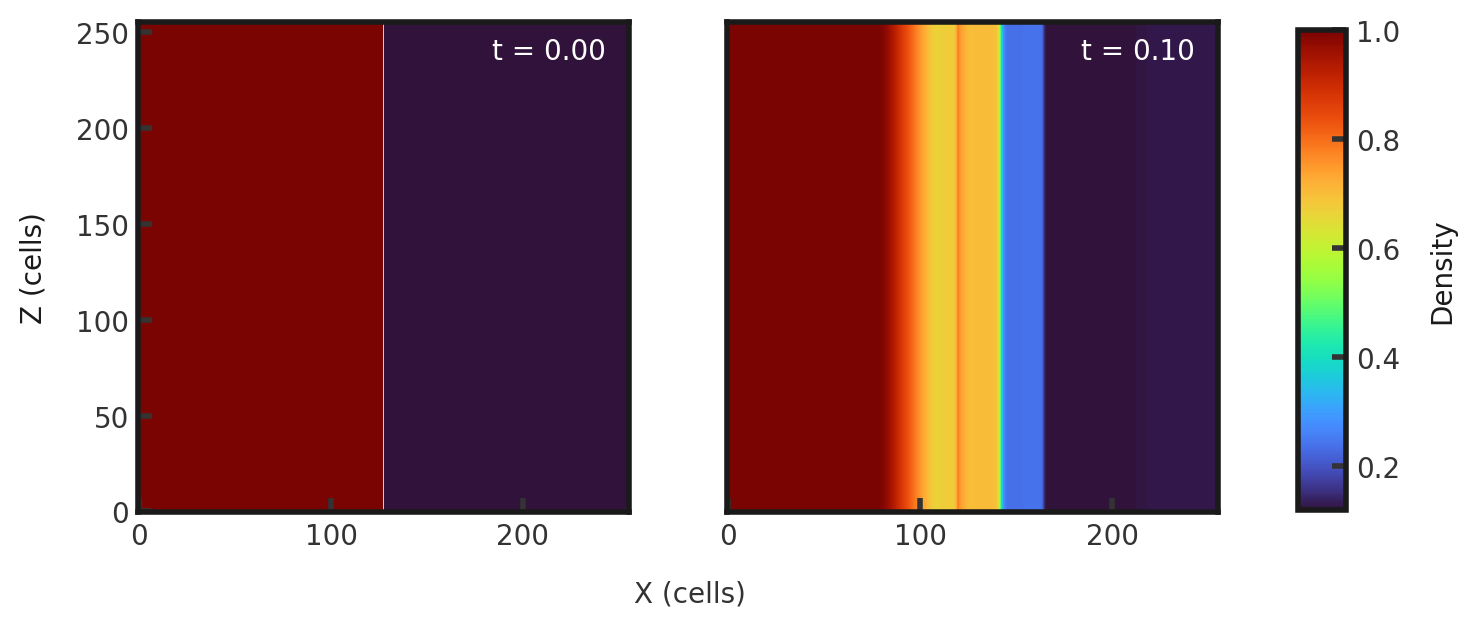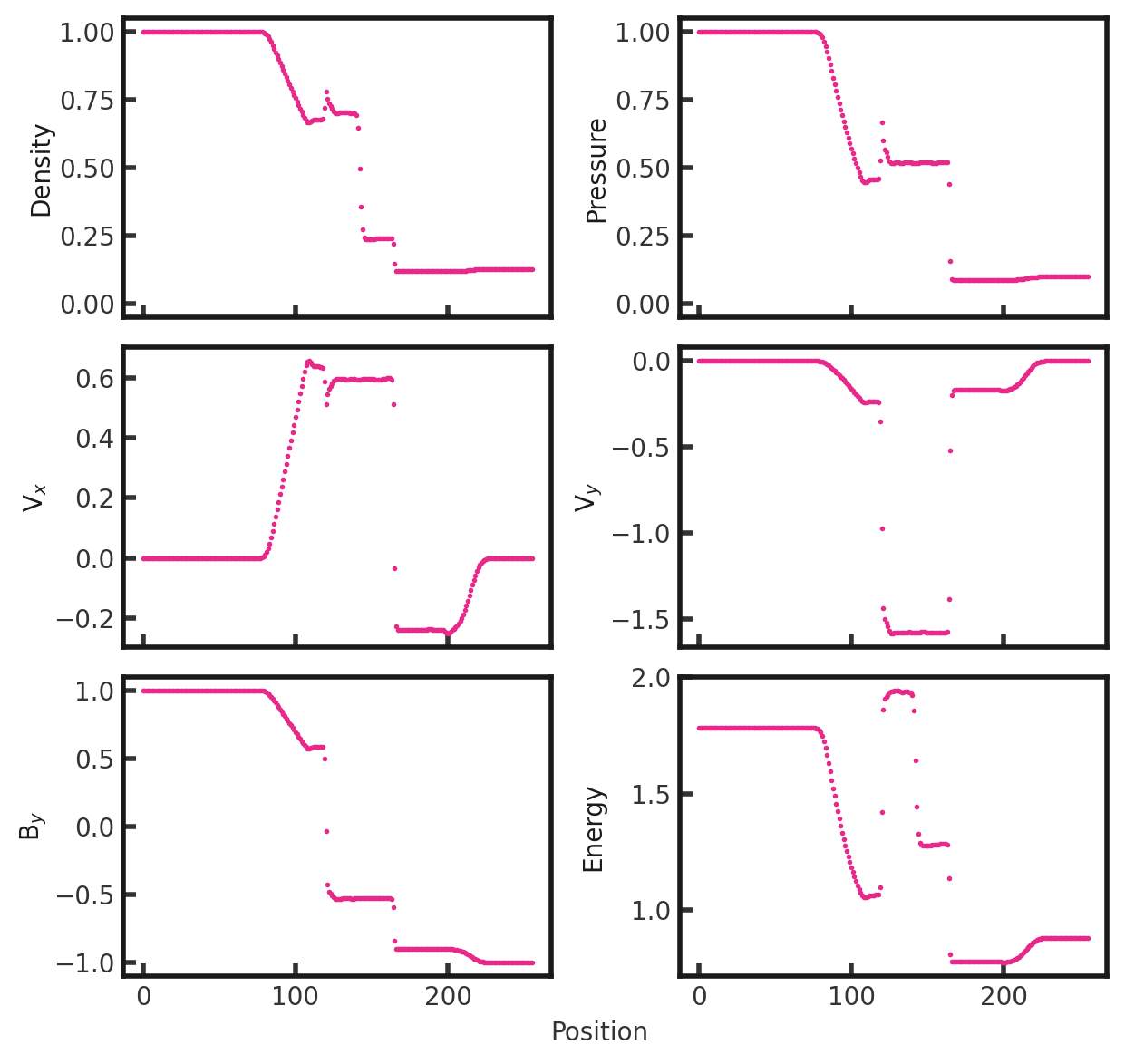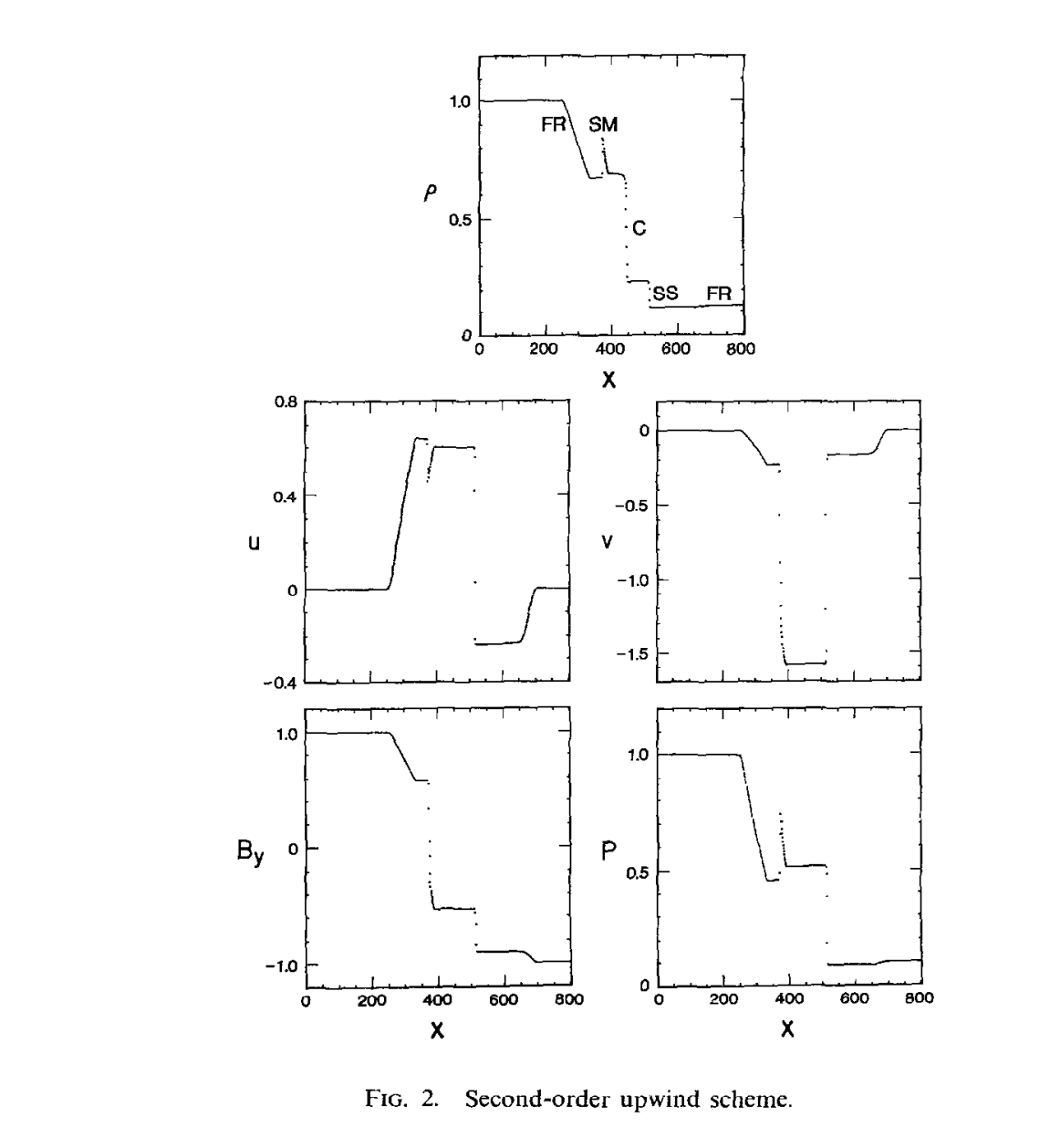-
Notifications
You must be signed in to change notification settings - Fork 32
3D Brio Wu
Similar to the Sod shock test but includes magnetic fields. Illustrates the ability of a code to resolve shocks and contact discontinuities over a narrow region. Parameters from Brio & Wu (1988). For more testing information see MHD Riemann Problems. The test consists of two constant states (on left pressure and density are equal to 1; on right they are equal to 0.1 and 0.128, respectively) separated by a discontinuity at 0.5. The left side has a magnetic field of 0.75 cholla/builds/make.type.mhd).
#
# Parameter File for 3D Brio & Wu MHD shock tube
# Citation: Brio & Wu 1988 "An Upwind Differencing Scheme for the Equations of
# Ideal Magnetohydrodynamics"
#
################################################
# number of grid cells in the x dimension
nx=256
# number of grid cells in the y dimension
ny=256
# number of grid cells in the z dimension
nz=256
# final output time
tout=0.1
# time interval for output
outstep=0.1
# name of initial conditions
init=Riemann
# domain properties
xmin=0.0
ymin=0.0
zmin=0.0
xlen=1.0
ylen=1.0
zlen=1.0
# type of boundary conditions
xl_bcnd=3
xu_bcnd=3
yl_bcnd=3
yu_bcnd=3
zl_bcnd=3
zu_bcnd=3
# path to output directory
outdir=./
#################################################
# Parameters for 1D Riemann problems
# density of left state
rho_l=1.0
# velocity of left state
vx_l=0
vy_l=0
vz_l=0
# pressure of left state
P_l=1.0
# Magnetic field of the left state
Bx_l=0.75
By_l=1.0
Bz_l=0.0
# density of right state
rho_r=0.128
# velocity of right state
vx_r=0
vy_r=0
vz_r=0
# pressure of right state
P_r=0.1
# Magnetic field of the right state
Bx_r=0.75
By_r=-1.0
Bz_r=0.0
# location of initial discontinuity
diaph=0.5
# value of gamma
gamma=2.0
Upon completion, you should obtain two output files. The initial and final densities and total pressures (in code units) of a slice along the y-midplane is shown below. Examples of how to plot projections and slices can be found in cholla/python_scripts/Projection_Slice_Tutorial.ipynb.


A skewer in x along y and z midplanes yields the 1-dimension solution at t = 0.10:

From left to right, we see a fast rarefaction followed by a compound wave, contact discontinuity, slow shock, and a final fast rarefaction.
We can compare to the original solution (Brio & Wu 1988):
